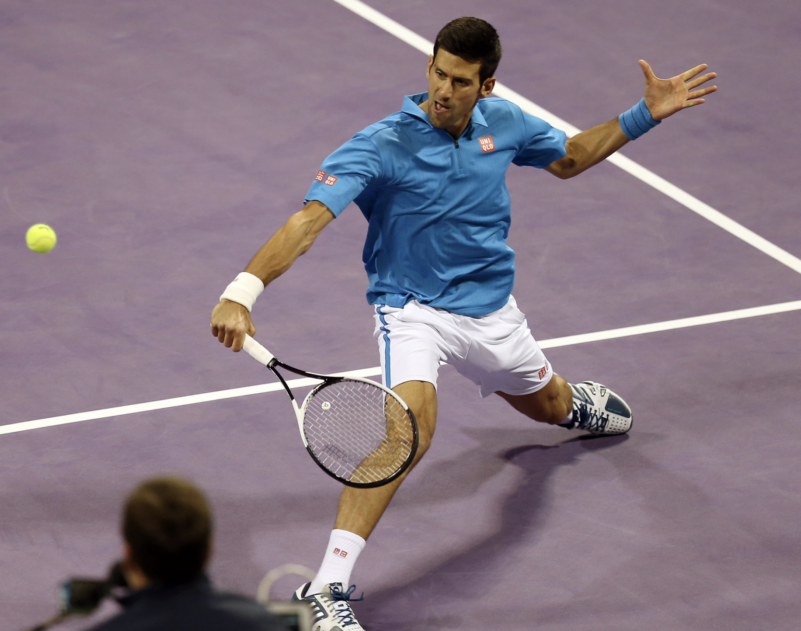by Lewis Robinson
• Novak Djokovic, born in Serbia, in 1987, is the 2019 reigning champion of Wimbeldon as well as the highest ranked tennis player in the world. He credits his super-nutritious, gluten-free diet for the extra edge of energy, stamina and success on the court.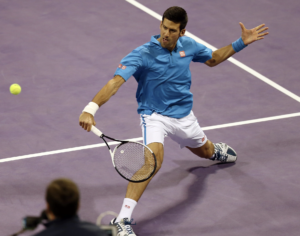
Djokovic starts the day with a very specific breakfast routine that consists of a large cup of room temperature water; two tablespoons of honey; a bowl of muesli or oatmeal cereal with nuts, seeds, fruit, coconut oil, and non-dairy milk or coconut water. A typical lunch is packed with carbohydrates, such as gluten-free pasta (quinoa or buckwheat), and a generous portion of vegetables. Dinner features a protein—salmon or other wild-caught medium-sized oily fish or an organic meat (i.e. chicken, turkey, grass-fed beef, etc.)—paired with steamed organic vegetables (zucchini, carrots, etc.)
- Tom Brady, who at 42 years young is the winningest quarterback in NFL history, has played in the NFL for 19 seasons, participated in nine Super Bowls with the New England Patriots—of which he won six—and under Brady leadership, his team is favored to win the title again this upcoming season.
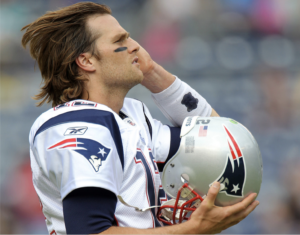
It is believed that one of the most important factors in his longevity is a controversial diet that includes only extremely healthy foods that seem to be compatible with his body. Brady constantly drinks water; his formula is to take half his body weight, cut that in half, and drink an amount of water, in ounces, that corresponds to that amount. If his weight was 220 ounces, that would come to 110 ounces. (approximately 14 8 ounce glasses.).
Bradyavoids white sugar, white flour, MSG, iodized salt, coffee and other sources of caffeine, alcohol, dairy, nightshade vegetables and even most fruits. Actually, Brady’s diet consists of 80 percent organic vegetables, with the other 20 percent consisting of lean meats—grass-fed beef or poultry raised on organic feed; with duck an occasional indulgence.
- LeBron James joined the NBA in 2003 at the age of 18 and at 34 is still thought of, by most of his basketball contemporaries, as the number one hoops player in the world. Loosely following a Paleo diet, James maintains his excellent conditioning with meals consisting of lean proteins, complex carbohydrates, fruits and veggies.
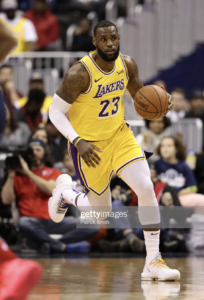
In the summer of 2014 he decided to make his body even more efficient and prepared for the upcoming basketball season by eliminating carbs from his diet for 67 days. This resulted in the slimming down of his tall, muscular frame from 270 pounds to 250 pounds, and adding considerable agility and speed to his game. After that successful season, he resumed his previous nutrition plan by including carbohydrates in his meals once again.
Remarkably, even when James allows himself to indulge now and then, it is to end a meal with one of his favorite cakes, the recipe of which includes a hearty helping of kale. (Does kale cake even count as a dessert?)
- Drew Brees, the NFL quarterback of the New Orleans Saints is yet another 40 year old still playing at a top professional level—just like Tom Brady.
Knowing which foods react well with his body has helped Brees avoid those that trigger inflammation or allergic reactions—such as gluten, animal dairy and tree-nuts. He  substitutes soy-based products (soy yogurt, soy milk, etc.) that benefit his system for animal dairy that disrupt it.
substitutes soy-based products (soy yogurt, soy milk, etc.) that benefit his system for animal dairy that disrupt it.
His basic diet is rich in fruits and vegetables, and bolstered with lean proteins, such as grilled chicken and fish.
- Stephen Curry is considered by many players and analysts to be the greatest shooter in the history of the NBA. Steph’s wife, Ayesha, has taken the lead in designing his diet plan, the main feature of which is the concept of eating the rainbow—that is, consuming colorful fruits and vegetables, packed with the minerals and vitamins a high-powered athlete needs—and the main restriction of which is to eliminate all products containing sugar. Ayesha’s delicious smoothies provide Steph with quick and easy ways to consume nutritious rainbows.
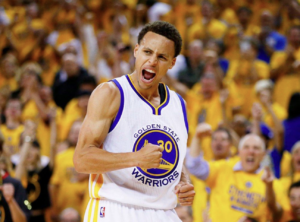 Also incorporated in his diet are such superfoods as quinoa, avocado and acai, which provide Steph with antioxidant protection and some other necessary nutritional ingredients for healthy living. What’s more, during his frequent travels, he has no trouble avoiding junk food, thanks to Ayesha’s ready to eat meal preps he takes on the road.
Also incorporated in his diet are such superfoods as quinoa, avocado and acai, which provide Steph with antioxidant protection and some other necessary nutritional ingredients for healthy living. What’s more, during his frequent travels, he has no trouble avoiding junk food, thanks to Ayesha’s ready to eat meal preps he takes on the road.
- Michael Phelps, the most decorated Olympic swimmer of all time during his years of active competition, had an unusual eating plan quite unlike any followed by athletes in most other sports. The swimming superstar was reported to consume as much as 6,000 calories per day to support his 6-foot-4 inch, approximately 190 pound frame and the energy he spent in his rigorous training regime.
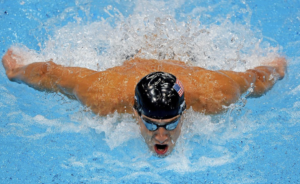
His typical breakfast usually included three fried eggs sandwiched between two slices of whole grain bread and a one-egg omelet; three slices of French toast, topped with sugar; three chocolate-chip pancakes; and two cups of coffee. Lunch consisted of one pound of enriched pasta; two large ham and cheese sandwiches with mayo on white bread (the latter a surprising choice that is judiciously left out of healthy diets); and energy drinks packing 1,000 calories. Phelps’ dinner at the time might include an entire pizza, one pound of pasta and more energy drinks. (One can’t help but wonder how he could sleep after such carbo-loading?)
- Serena Williams is arguably the greatest female tennis player of all time. During her tournament seasons she is especially focused on maintaining healthy eating habits, which in her case, consist of a mostly raw vegan diet enhanced with nuts, beans, lentils
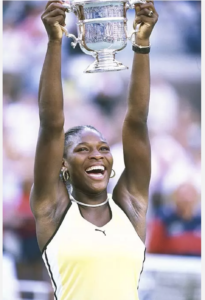 and sprouted quinoa. Although she does indulge from time to time in such favorites as fried chicken and grits, her self-discipline maintains her optimum nutrition plan that keeps her mind and body always ready and in top form for prime time.
and sprouted quinoa. Although she does indulge from time to time in such favorites as fried chicken and grits, her self-discipline maintains her optimum nutrition plan that keeps her mind and body always ready and in top form for prime time.
Serena’s breakfasts may include a cup of oatmeal cereal with strawberry, tangerine and almond butter. Her lunch salads go beyond lettuce and spinach with added mandarin and orange slices, cherry tomatoes, onions, pita croutons and almonds. Later snacks or meals include grilled chicken, brown rice with chia seeds and hemp, and fresh veggies.
- Roger Federer, the handsome Swiss tennis star now considered to be one of the greatest players of all time, came within a whisker of winning another Wimbledon championship in 2019, but at age 38, even coming in second after his long, close and grueling match with Novak Djokovic deserves a badge of honor.
Always aware that of the link between nutrition and athletic performance, Federer was a 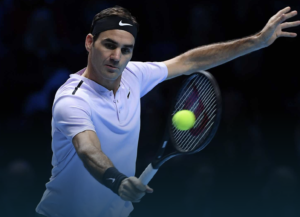 vegetarian until the age of 14 but continued to adapt his diet to the needs of a maturing body, the demands of a high-stress career and his increasingly strenuous workout regimen.
vegetarian until the age of 14 but continued to adapt his diet to the needs of a maturing body, the demands of a high-stress career and his increasingly strenuous workout regimen.
With the latter’s requirement for foods that help build and repair muscles, Federer has created an interesting eating plan that includes frequent meals, spaced over every 2-3 hours and consisting of a high-carbohydrate breakfast with healthy fats (avocado, etc.), low-fat milk and cereals to fuel his system for the rest of the day. Lunch is rich in lean proteins, while he usually eats a light dinner. Nor does Federer deprive himself of the occasional ice-cream and chocolate, since he believes that an infrequent sugary indulgence “is not always bad.” (Why question a legend?)
• Lindsey Vonn, the American World Cup alpine racer and Gold Medal winner in Downhill Racing at the 2010 Winter Olympics, is considered to be one of the world’s greatest skiers.
A spirited and daring athlete, Vonn staunchly resists her craving for nightly steak and sweet 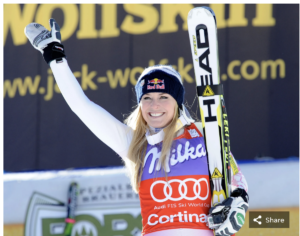 potato dinners, aware that such heavy meals would slow her speed while she hurtles down perilous ski runs toward the finish line.
potato dinners, aware that such heavy meals would slow her speed while she hurtles down perilous ski runs toward the finish line.
Helping her substitute nutritious and energizing meals that still contain her preferred flavors, Vonn’s personal chef, Dan Churchill, creates menus that include combinations of lean protein, whole grains and vegetables that are never boring. Churchill caters to Vonn’s appetite for diversity by including such familiar dishes as Pasta Primavera, along with other high-octane carbs but also the full gamut of nutritious super-foods—although careful not to bore her by serving broccoli too frequently. (The rest of her support-team is equally mindful that Vonn—like probably most peak performers like her—do better with occasional days off from their training schedules, to avoid over-training and boredom.)
Lindsey Vonn does enjoy Chef Dan Churchill’s lineup of meals, which include:
Breakfast, which alternates between a combination of scrambled eggs with red bell peppers, onions, mushrooms, spinach, garlic and cilantro; and on another day, consisting of oatmeal with blueberries for sweetness, to make sugar or honey unnecessary.
Lunch is rice and avocado with a lean protein like fish or chicken; or an ‘energy meal’ of whole grains, vegetables (heavy on root veggies), nuts and seeds.
Dinner is her favorite preparation for next day racing—a combo of salmon, rice and vegetables (including asparagus whenever possible).
Chef Churchill will occasionally indulge Vonn’s sweet tooth with desserts like a poached pear topped with vanilla bean and turmeric-spiced yogurt.
• Sue Bird has long surpassed her title as a ‘basketball legend.’ Now in her 17th season in the Women’s National Basketball Association, the 38-year-old point guard is still lacing 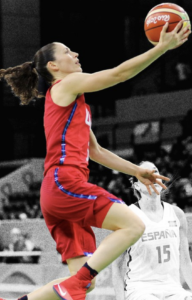 up her Nikes with relentless ambition to help her team win.
up her Nikes with relentless ambition to help her team win.
To stay on top of her game, Bird follows a healthy diet that, due to a medically proven allergy to gluten, is completely gluten-free. She also avoids dairy and sticks to anti-inflammatory foods. Her diet consists mostly of vegetables, chicken, fish and eggs—and she rarely eats red meat. Lately, Bird has become enamored of rice bowls with brown rice, sweet potatoes, chicken and mixed veggies. She prefers a certain routine in her meals, which consist of:
Breakfast—two eggs, vegetables (salad or other mix), toast and coffee.
Snack—a banana and some peanut butter in mid-afternoon, after training.
A large meal about four hours before a game; and health drinks that provide extra carbs and protein during the day.
A postgame protein shake consisting of almond milk, orange juice, fruit and whey protein is one of her favorite indulgences.
Bird’s main meal is a big dinner consisting of green vegetables, protein and carbohydrates to help the recovery of muscles and energy depleted during the game.

